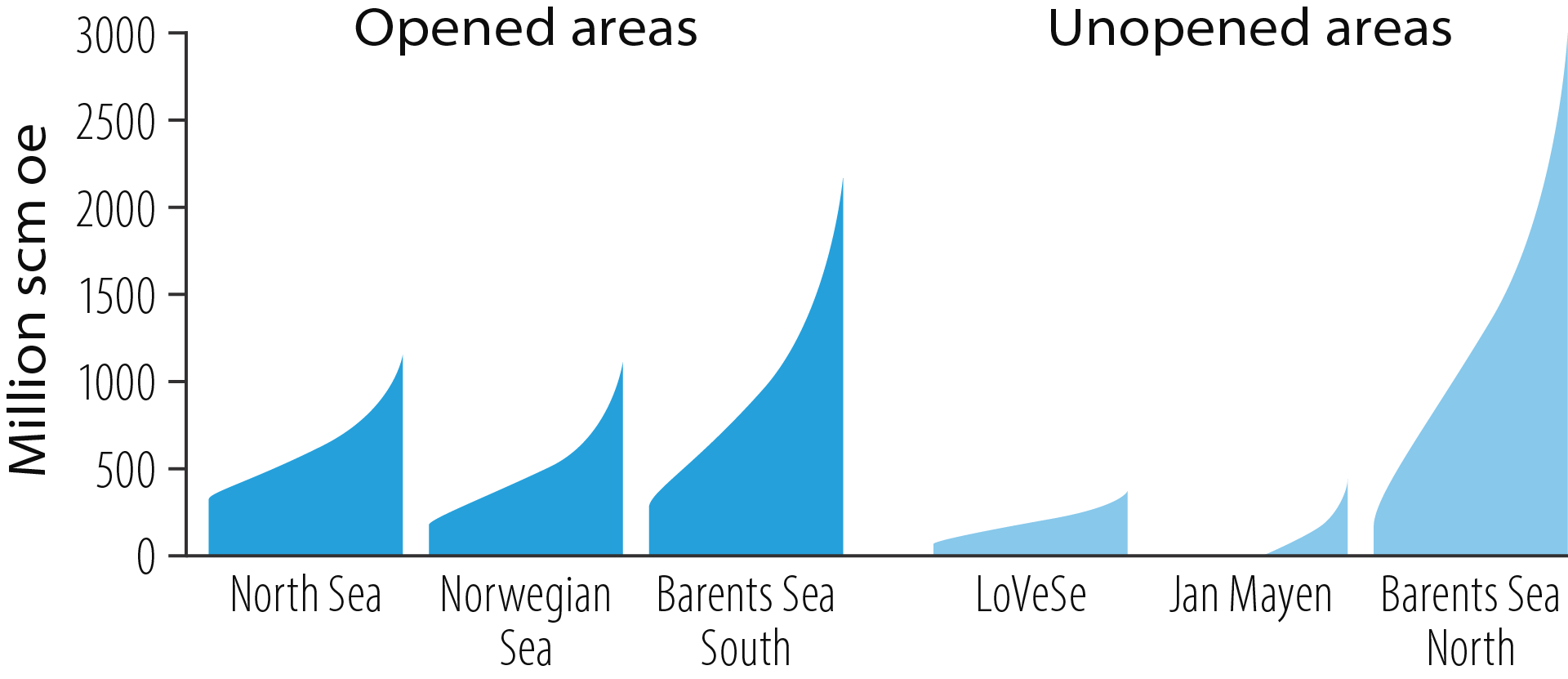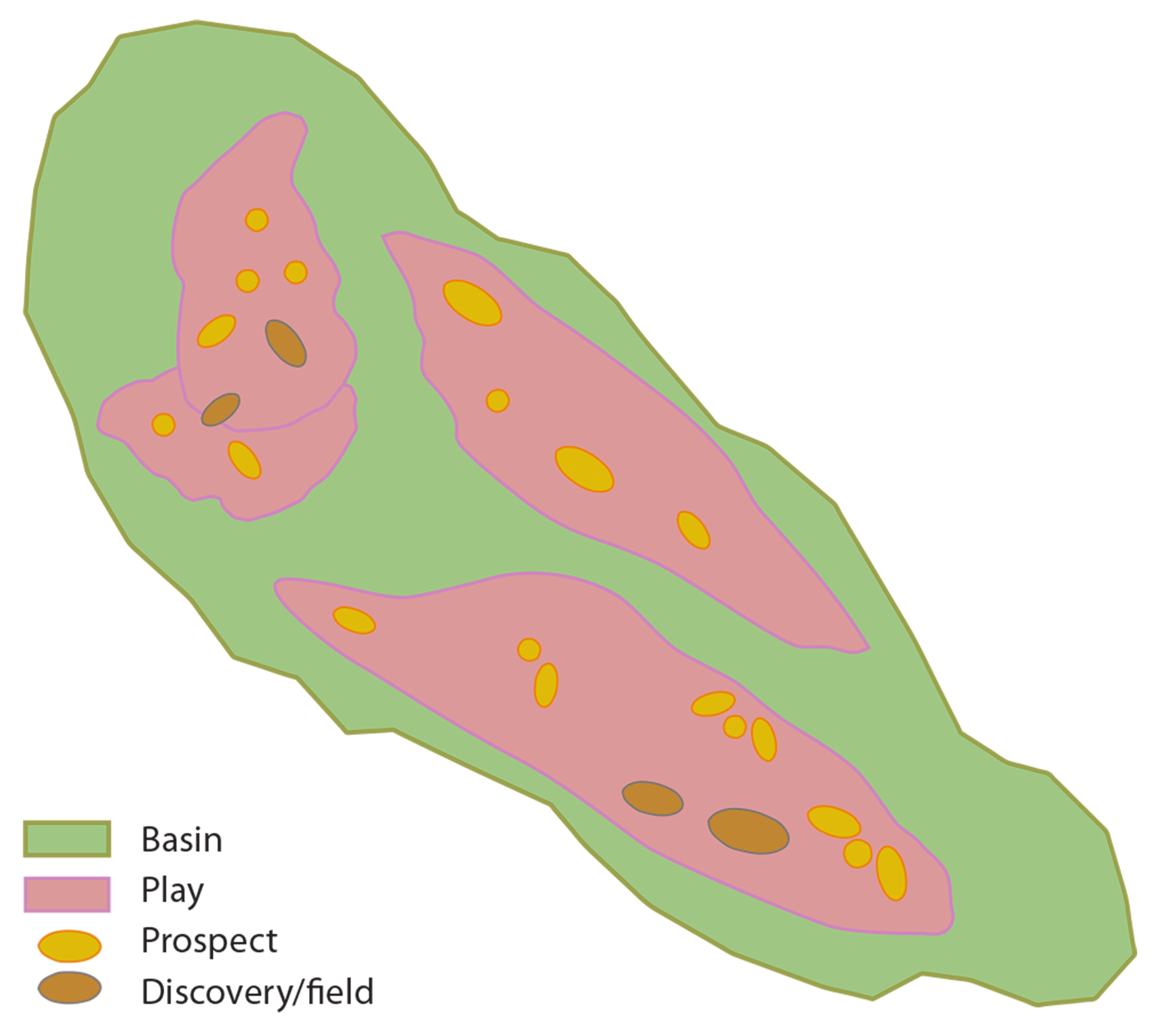Plays
One of the Norwegian Offshore Directorate’s tasks is to maintain an overview over both proven and remaining undiscovered petroleum resources on the Norwegian Continental Shelf.
The NPD therefore works to map potential petroleum resources both in opened and unopened areas in order to have a sound factual basis for future decisions.
There are several methods for estimating how much liquid and gas have formed and are stored in an area. Which method is chosen depends, in part, on the level of available knowledge about the area. The method the Norwegian Offshore Directorate uses is analysis of plays.
More than 50 years of petroleum activity on the Norwegian Shelf has given the Norwegian Offshore Directorate access to vast volumes of data. Well information, discovery rates and recovery rates are examples of the data used in these analyses.
The knowledge level is highest in the North Sea, and gradually declines as one moves north and into areas that have not been opened for petroleum activity. The difference in knowledge is reflected in greater uncertainty in estimated volumes.

Undiscovered resources in opened and unopened areas with a margin of uncertainty. LoVeSe is the abbreviation for the areas outside Lofoten, Vesterålen and Senja. See Resource report 2022.
Play |
|
Play: a geographically delineated area where several geological factors are present so that producible petroleum could be proven. These factors are:Reservoir rock, a porous rock where petroleum can accumulate. Reservoir rocks in a specific play will belong to a given stratigraphic level (age). Cap rock, a tight (impermeable) rock overlaying a reservoir rock, so that petroleum can migrate no further and accumulates in the reservoir. The resulting trap must have formed before petroleum ceased to migrate into the reservoir. Source rock, shale, limestone or coal containing organic materials which can be converted into petroleum. The source rock must also be mature – in other words, have a temperature and pressure such that petroleum actually forms – and the petroleum must be able to migrate from source rock to reservoir rock.
|
Play analysis is based on systematising and grouping the geological parameters that characterise the play, and that separate it from other plays. Knowledge from proven resources is an important point of departure for estimating undiscovered petroleum resources in an area where several factors must be addressed:
- Total undiscovered resources
- Geographical distribution of the undiscovered resources
- Size distributions for future (large or small) deposits and number
- Distribution between undiscovered oil and gas resources
An assessment is made of each play to determine whether it is likely that the following key factors are present: reservoir rock, trap and source rock. The product of the likelihood of these three single factors is called the play probability. This describes the uncertainty associated with the play until a discovery is made. In addition, the number of potential prospects must be evaluated, their size distribution and the percentage of these that could be accumulations.
In a confirmed play, at least one discovery has been made, thus proving that the play works. This discovery does not need to be profitable. When a play is confirmed, the resource estimate associated with the play will increase as a consequence of increased probability of discovery.
Even when a play is confirmed, it is still uncertain whether the resources are found in small or large accumulations, and whether the resources are mainly oil or gas.
There are often multiple plays within the same geographical area. For example, they could have different geological ages and could be located in layers at various depths in the stratigraphic sequence. The Norwegian Offshore Directorate has defined more than 70 plays on the Norwegian Shelf, most of which are confirmed in the North Sea, with an increasing percentage of unconfirmed plays to the north.
The estimates for undiscovered resources are updated every other year, and are published e.g. in The Shelf and in resource reports
More information about plays and undiscovered resources: Geological assessment of petroleum resources in the eastern parts of the Barents Sea North 2017
Updated: 30/04/2024
